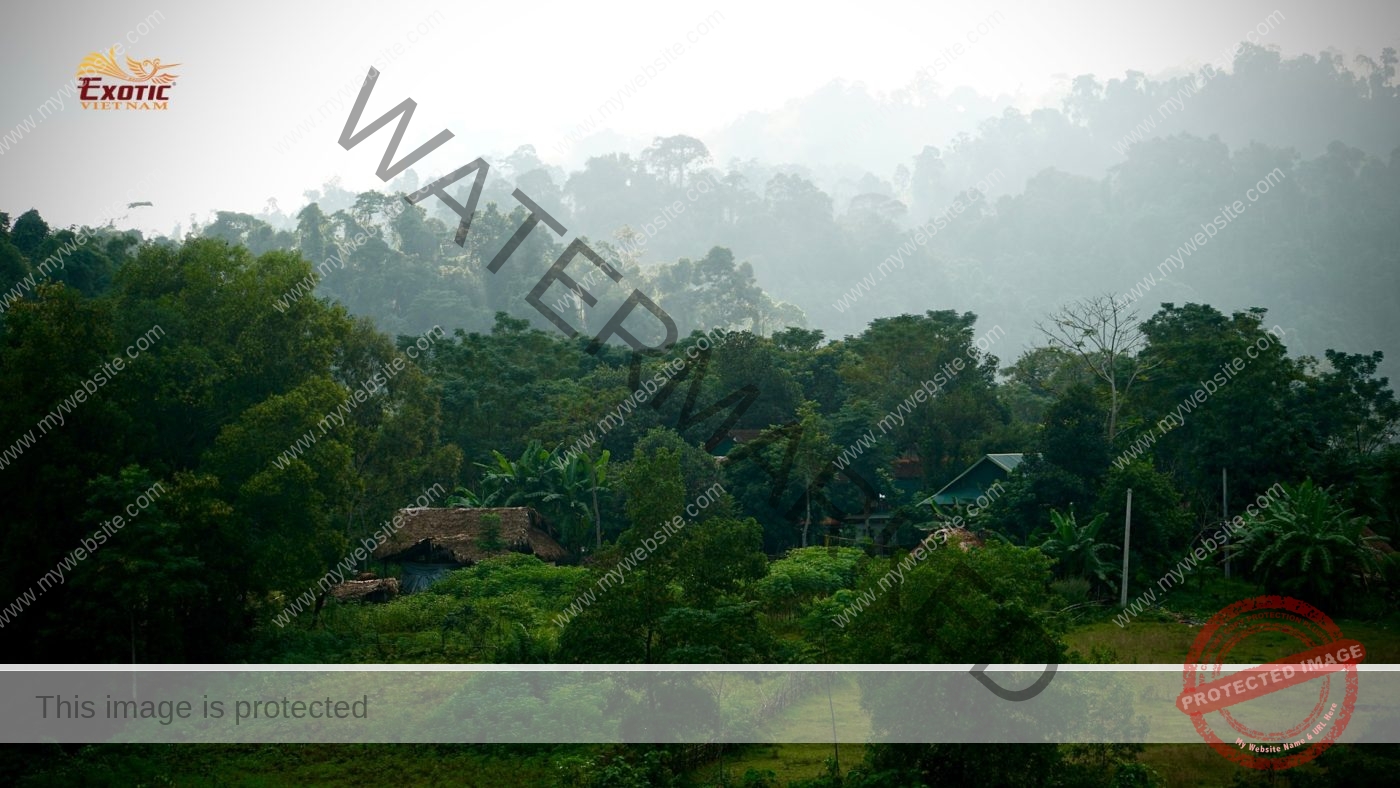Covering two-thirds of the natural area of Ngha An Province, a trip to the Western Nghe An region allows visitors to experience the stunning and wild nature of Pu Mat National Park. Beyond its breathtaking landscapes, this region, home to 39% of the population belonging to ethnic minorities, offers a unique opportunity to delve into the culture and traditional crafts of these communities, particularly the Thai people.
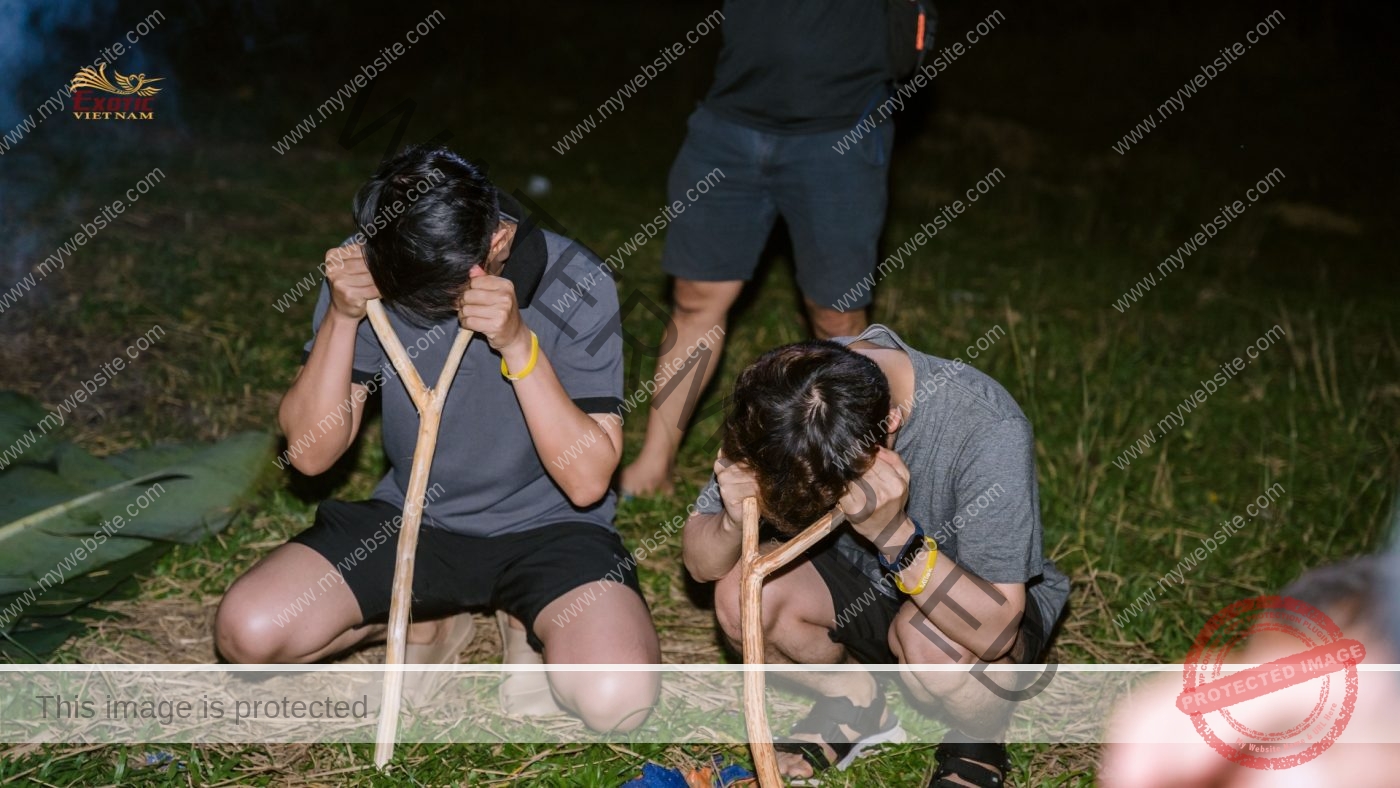
The Thai and Dan Lai Ethnic Villages, A Heritage of Preserved Culture:
The Dan Lai People – Sleeping While Sitting:
When visiting the mountainous region of Tay Nghe An, travelers have the opportunity to explore the villages of the Dan Lai people at Ban Le, Co Phat, and Khe Bung. The Dan Lai are a branch of the Tho ethnic group, which belongs to the Viet – Muong ethnic family. They are also known as “Yellow Leaf Xa”, a term used to refer to groups of nomadic people who build temporary shelters from banana leaves, which quickly turn a faded yellow.
The unique habit of sleeping while sitting among the Dan Lai originates from their harsh living conditions tied to hunting and gathering. They live along the streams on the slopes of Pu Xai Lai Leng, a remote area that locals often refer to as “khe khặng.” Their livelihood depends on hunting and foraging for products from the dense forests. At night, in their small makeshift huts, the Dan Lai must light fires and sit around them to stay warm. This practice of sleeping while sitting has become a habit developed to guard against unexpected wild animal attacks, allowing them to wake easily and flee when necessary. From their wild lifestyle, this custom has gradually become an integral part of Dan Lai identity.
Over time, many stories have been woven to explain the sitting-sleeping habit of the Dan Lai, such as having to escape and hide deep in the forest to avoid the pursuit of hostile groups. Although this custom has faded away due to changing living conditions, the story remains as a unique cultural trait of the Dan Lai. It also serves as a testament to their strong adaptability to nature and their challenging life, enhancing the appeal for those who wish to understand the culture and lifestyle of this community.
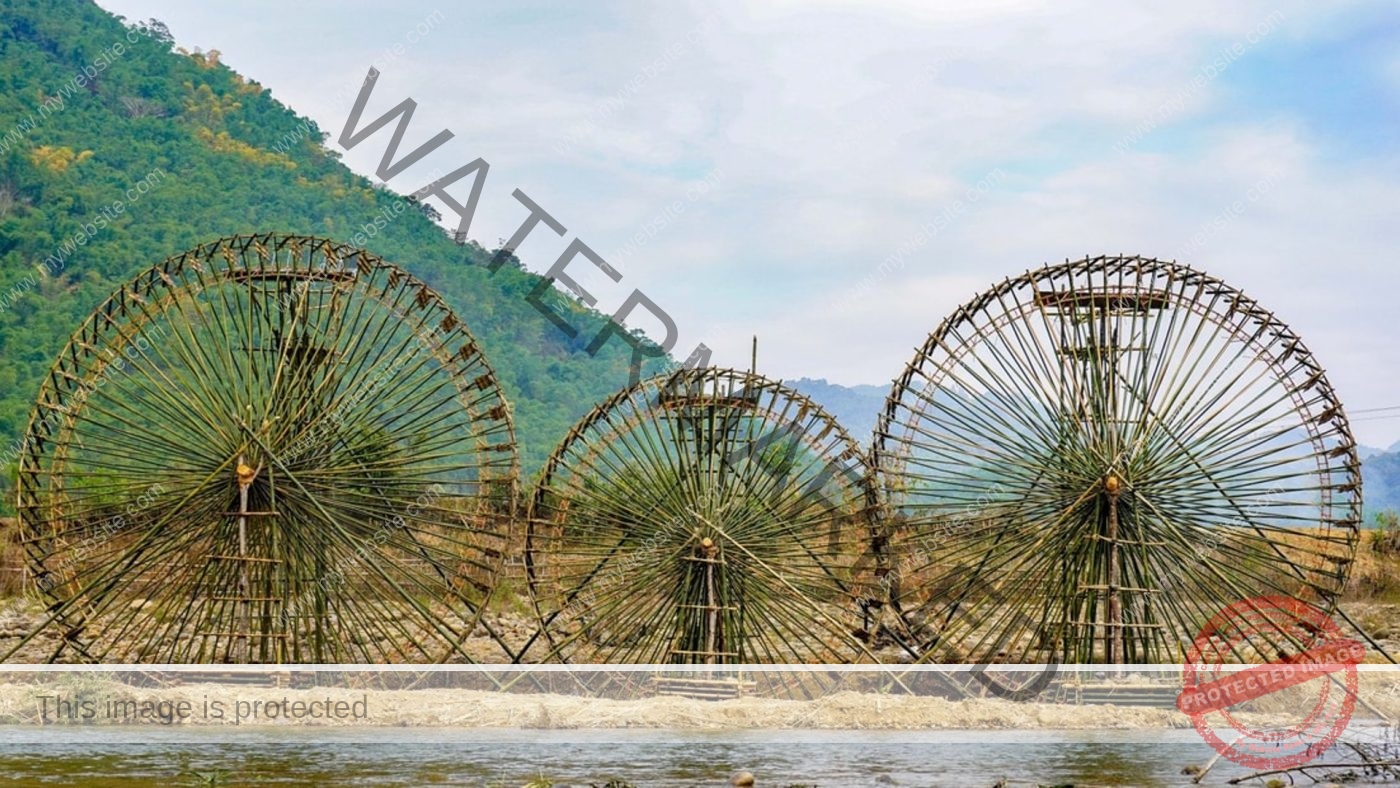
Water Wheel:
Many Thai villages in the western Nghe An region still preserve the tradition of making and using water wheels (also known as “coọn”) to channel water from rivers and streams for irrigation. Notably, Quy Chau district currently has over 200 active water wheels operating day and night, diligently drawing water from rivers to nourish its fertile rice fields. The craft of making water wheels has been passed down through generations of the Thai people and continues to thrive today.
The water wheel is entirely crafted from bamboo and rattan—materials readily available in nature. The most challenging part of the process is selecting 160 bamboo poles of uniform size to create balanced spokes, allowing the wheel to rotate smoothly and steadily. All bamboo pieces, regardless of size, are connected by sturdy bamboo cords, forming a strong and complete framework. Each water wheel typically has a lifespan of about two years, after which it is repaired and reused, reflecting the skill and resilience in the labor culture of the Thai people.
The water wheel is not only a valuable labor tool but also a symbol of the connection between humans and nature, demonstrating the creativity and adaptability of the Thai ethnic community in overcoming the challenging living conditions of the high mountains.
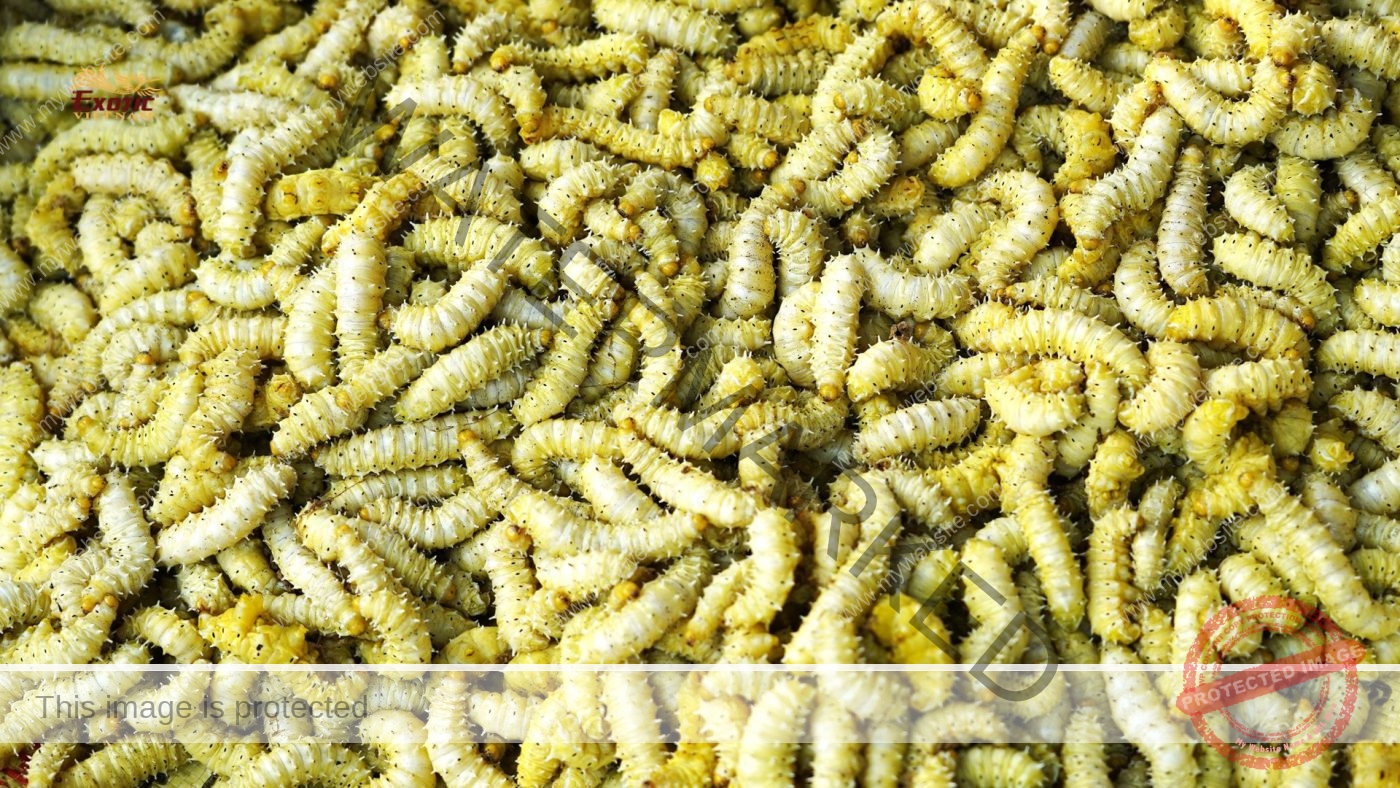
Silkworm Farming:
Visitors will have the opportunity to explore the entire process of silkworm farming, from the transformation through various stages: egg – larva – cocoon – pupa, to the silk rearing and weaving processes. Silk has long been regarded as the highest quality material for weaving traditional products such as the Thai people’s scarves, shirts, and skirts. The silk rearing process lasts about 5 to 7 days, during which meticulous and careful care of the silkworms is essential. During the day, the silkworms are fed three times, and at night, twice, with a feeding every four hours to ensure healthy growth.
After five molts, the silkworms reach maturity at the fifth age, at which point their bodies have accumulated enough nutrients, and they stop eating to prepare for spinning silk. The mature silkworms are placed on a “né”—a bamboo frame woven with small squares. Each silkworm will crawl into its own compartment and begin to spin silk, wrapping it around its body to form a cocoon; this process takes approximately 3 to 8 days.
The growth cycle of silkworms not only depends on the techniques of care but is also influenced by the season and weather. In summer, silkworm farmers can harvest cocoons after 20 days, while in spring, this period extends to about one month, and in winter, it can take over one month to harvest the cocoons. The process of silkworm farming and silk production is a distinctive feature of the traditional culture of the Thai people, combining patience and skilled craftsmanship to create exquisite handcrafted products.
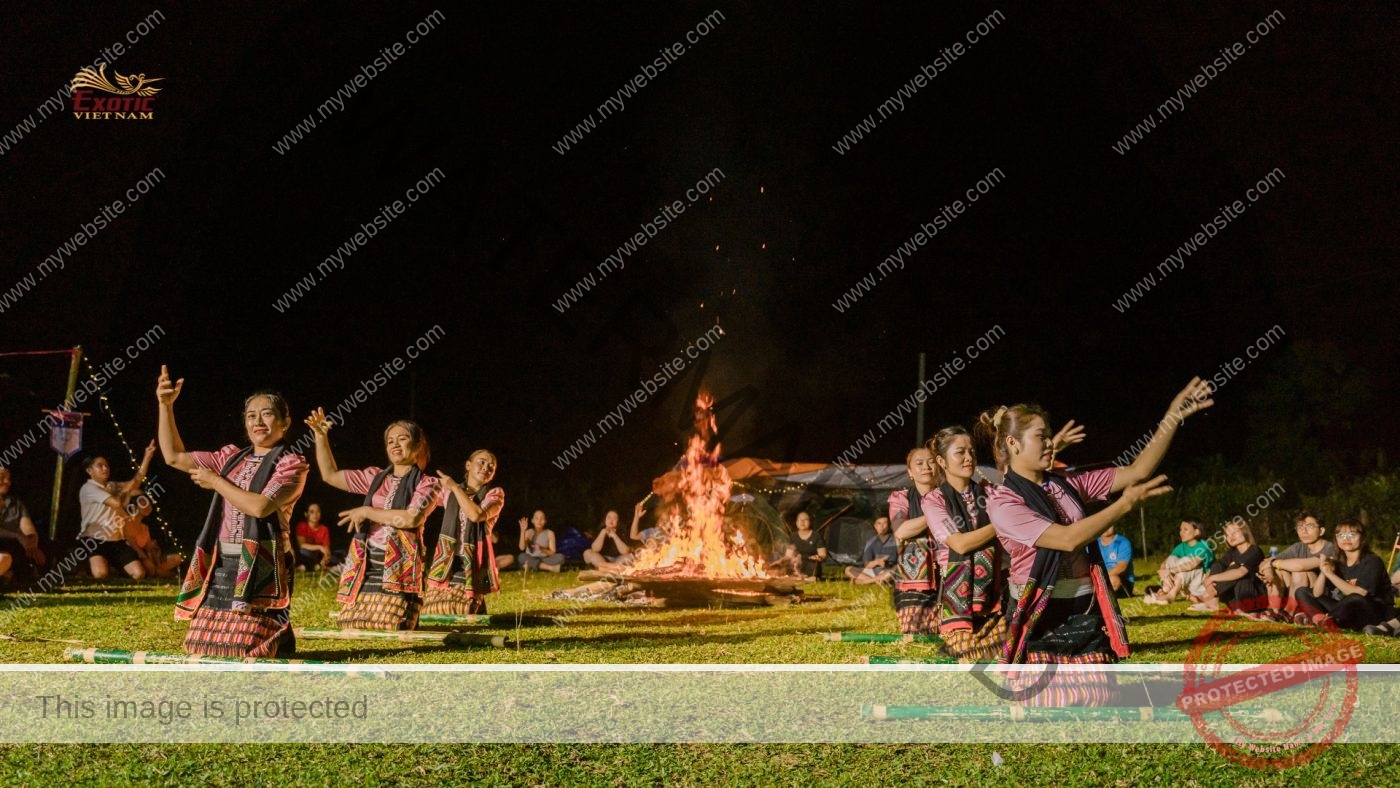
“Xòe” Dance:
This is an emblematic dance that reflects the connection between humans and the spiritual world through movements that mimic daily activities, rituals, culture, and labor. Like “rice to eat, water to drink,” “xòe dance” has long been an indispensable part of the cultural and spiritual life of the Thai community. This unique form of art embodies the desire to connect with supernatural forces, expressing the longing for protection and blessings from deities for a full and peaceful life.
The Thai worldview and philosophy of life are expressed through the xòe dance, intertwined with three realms: heaven, earth, and the divine. Each dance step and gesture carries hopes for safety and abundance. In the xòe dance space, the attire of Thai women, though modernized and transformed over time, still highlights the rustic yet vibrant beauty of the Cỏm blouse, the belt, the “xà tích”, and the “piêu” scarf worn on the head. The costumes become even more splendid as participants hold hands, guiding each other in an enchanting xòe dance.
The songs “khắp, lăm, nhuôn,” accompanied by the resonant sound of gongs, invite and entice participants to join in. The “xòe dance” festival is also an opportunity for visitors to enjoy “rượu cần” (a traditional rice wine) and engage in the game “khắc luống,” which means pounding rice in the Thai language. The rhythmic pounding on the long wooden trough—”long tấm khau”—creates a cheerful and lively atmosphere.
The Western region of Nghe An is not just a vibrant tapestry of lively “xòe dances”; it is also a stunning convergence of breathtaking nature and a rich array of cultural diversity. The sincere warmth and sweet melodies of local folk songs will forever linger in your memory, evoking the spirit of your journey to Nghe An.
Embarking on a journey to explore the culture of Western Nghe An creates an ideal environment for connection, sharing, and bonding. The long hours spent trekking through the wilderness foster a deep sense of care among participants, encouraging collaboration in overcoming unexpected challenges that arise along the way. This experience cultivates a space where employees can interact, learn, and understand one another, thereby strengthening unity within the company. Moreover, such trips leave indelible impressions on employees, enhancing cultural cohesion and forging unforgettable memories. They also help establish a positive and healthy work environment, indirectly attracting and retaining talent.
Exotic Vietnam stands as a trusted leader in organizing team building activities for businesses, seamlessly blending the exploration of nature with the celebration of community culture. With a mission to deliver unique and meaningful experiences, Exotic Vietnam places a strong emphasis not only on fostering teamwork and solidarity but also on creating opportunities for team members to gain profound insights into the cultural and natural treasures of the land they are discovering. Our team-building programs are designed with flexibility in mind, tailored to meet the specific needs and goals of each organization.
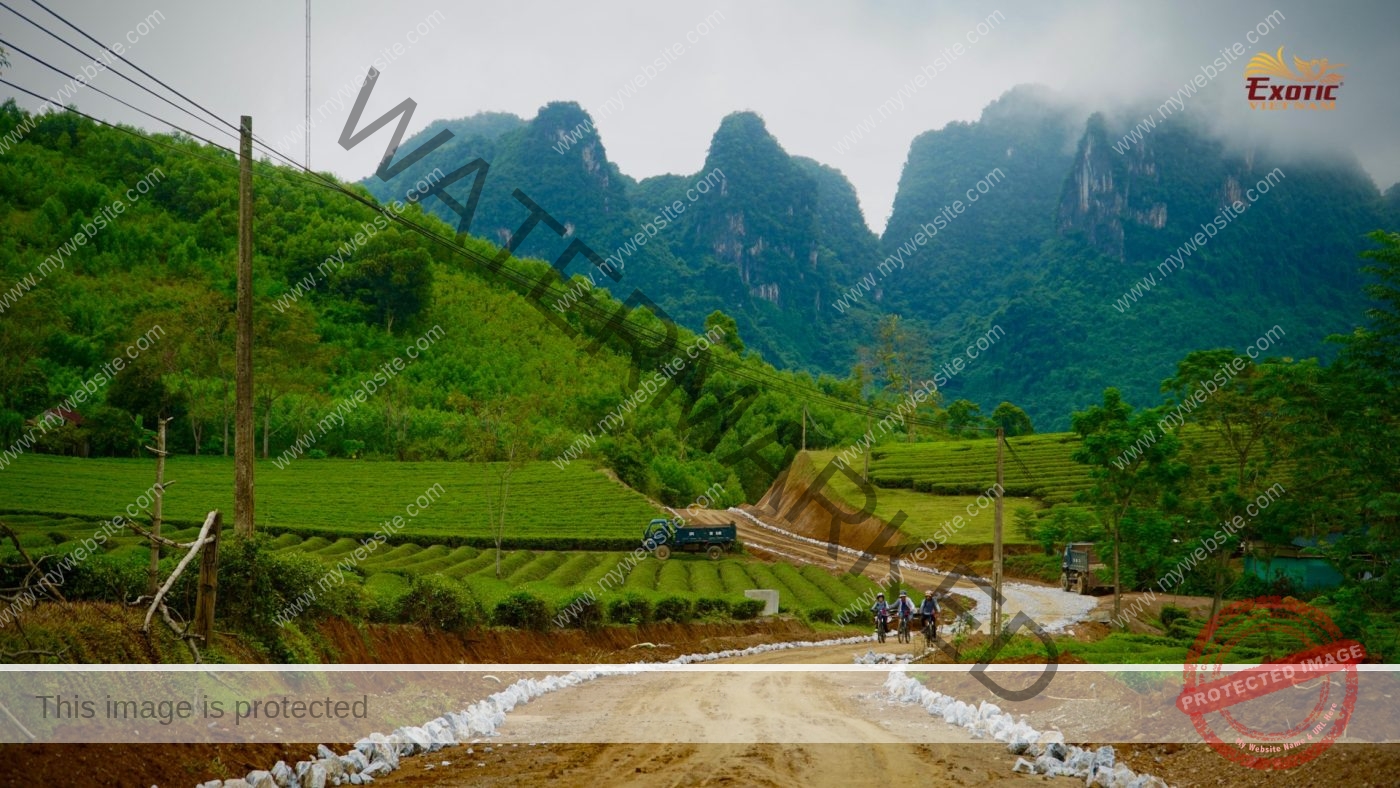
Exotic Vietnam is dedicated to crafting memorable and enjoyable moments. Our passionate and experienced staff will accompany you every step of the way, ensuring that each activity unfolds smoothly and achieves maximum effectiveness. With Exotic Vietnam, team building transcends mere entertainment; it becomes a journey of exploration, learning, and meaningful connection. Reach out to us at www.exotic.vn, and let’s embark on this adventure together!

